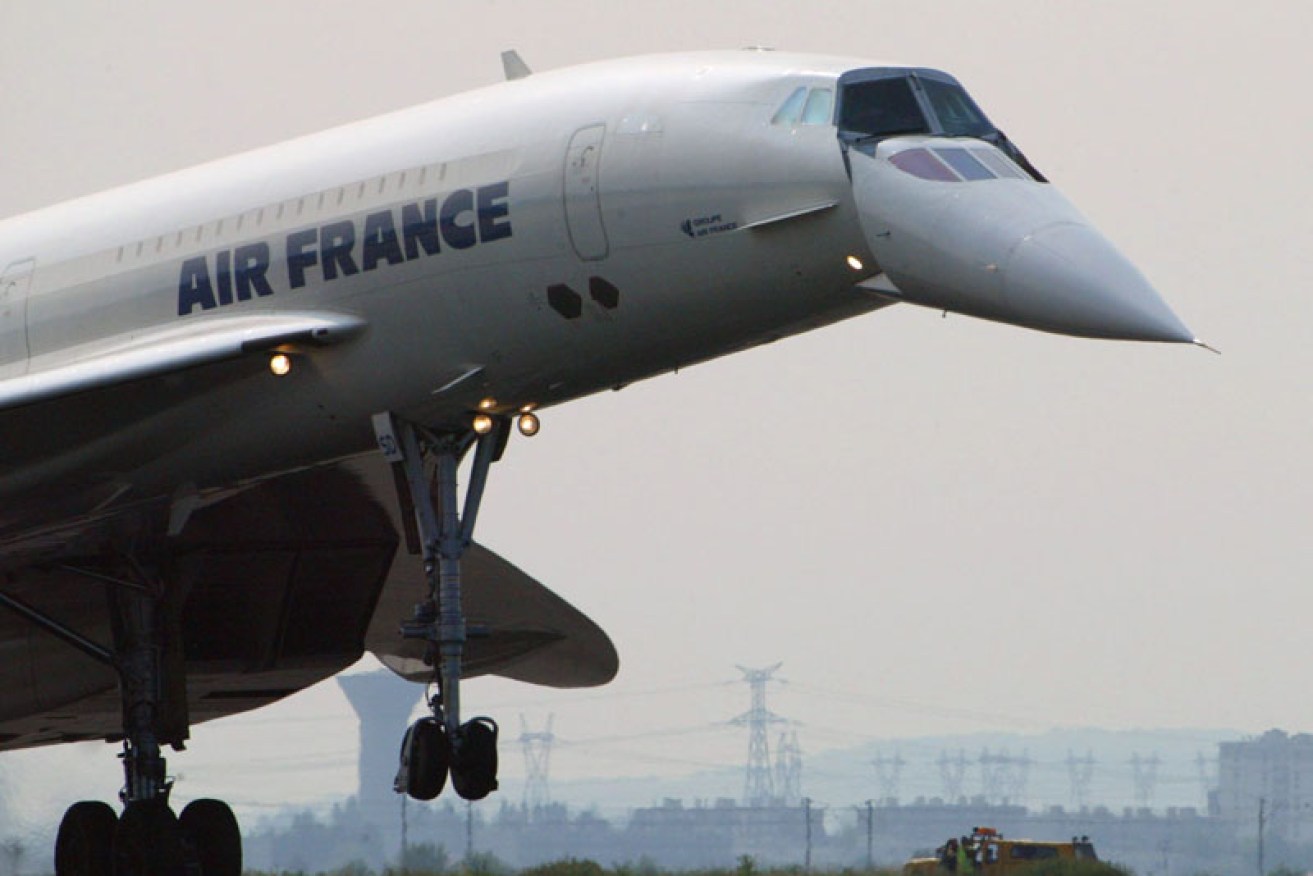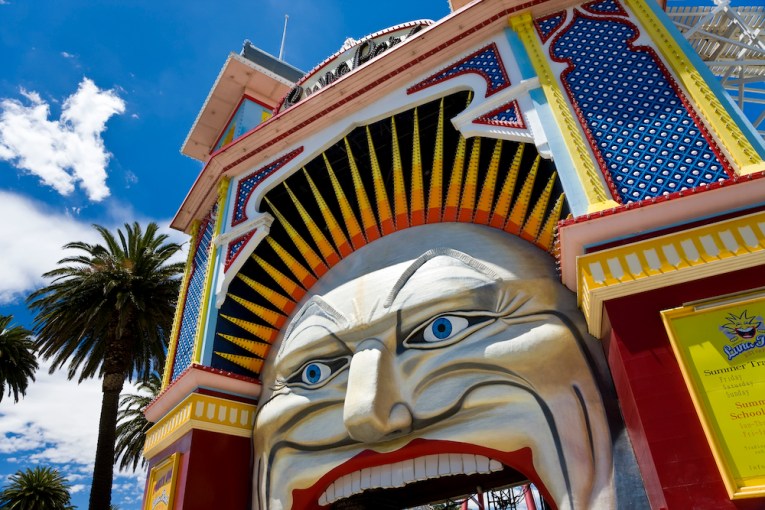High-speed air travel breaking new ground

AAP
A dart-shaped business jet that is more than 1000 kilometres per hour faster than a Boeing 747 is on course to make the first boarding call in the long-awaited revival of supersonic air travel.
Nicknamed the “Son of Concorde”, the three-engined AS2 aircraft will have a maximum speed of 1960 kmh (Mach 1.5), which means it could fly between London and New York in just three hours and from Los Angeles to Sydney in 10.
Designed and developed by US company Aerion Corporation, test flights of the AS2 are due to begin within six years, with the first commercial flights in 2023.
• Now is the perfect time to fly to the USA
• Why do we still need to carry passports?
• Stop kicking my chair! Flying etiquette explained
It is just one of several supersonic concepts currently on the drawing board in a resurgence in high-speed air travel being propelled by ever-improving technology and design.
A rival business jet that purports to significantly reduce the deafening sonic boom, generated when an aircraft breaks the sound barrier at about 1235kmh, is scheduled to be on the market by the early 2020s. Two larger commercial jets are also planned – one twice as fast as the now-retired Concorde.

A Concorde lands Charles de Gaulle international airport in 2003 from New York on the aircraft’s last transatlantic flight for Air France. Photo: AAP
In 1969, supersonic air travel looked every bit the way forward when the Concorde, with its distinctive delta wings and drooping nose, made its first flight, enthralling aviation enthusiasts everywhere.
But even with substantial government subsidies, the Concorde was a major economic failure, never really recovering from the massive loss of confidence when Air France Flight 4590 crashed in Paris in 2000, killing 100 passengers and nine crew. It was retired three years later.
The only other supersonic airliner to enter commercial service was the Russian Tupolev Tu-144, which clocked just 55 passenger flights in 1977-78 before being restricted to carrying cargo and then airborne laboratory duties when production of the jet was stopped in 1982.
Perhaps the most limiting factor confronting supersonic air travel has been noise. The shock waves from a sonic boom sound like an extremely loud thunder clap to someone on the ground and can shatter windows in buildings under the path of flight.
This problem particularly hobbled the performance of the Concorde, which was only allowed to fly at supersonic speeds over the ocean and thus was restricted to operating across the Atlantic. Supersonic flight continues to be banned across land in the US and Europe.
Despite this, there are new supersonics in the works.
Aerion AS2

The jet will seat 12 people. Photo: Aerion Corporation
The AS2 business jet – with a $120 million price tag – is in the vanguard of the new supersonic age in air travel.
With relatively short, thin wings and a long fuselage, the 21.8m jet is similar to some supersonic fighters.
With a top speed of 1960kmh (Mach 1.5), the three-engined AS2 is planned to fly up to a dozen well-heeled passengers in its luxurious cabin 67 per cent faster than current long-range jets.
A spokesman for Aerion told The New Daily that the AS2 would be “very attractive” on routes to Australia given the long overwater distances.
“Many of today’s longest airline routes are to Australia,” the spokesman said.
Apart from a digital (fly-by-wire) flight control system and integrated fuel system and landing gear, “supersonic natural laminar flow technology” on the jet’s wings reduces drag by as much as 20 per cent compared to the delta wing configuration of the Concorde.
The AS2 is projected to have a range of more than 9000km and seems destined to concentrate on trans-oceanic routes because of the supersonic flight ban over land. Nonetheless, the jet would still save travellers three hours across the Atlantic and six hours or more on long Pacific routes.
The AS2’s developer, Aerion Corporation, is based in Reno, Nevada, and backed by Texas billionaire Robert Bass. Aerion and Airbus are currently choosing a US manufacturing site for the AS2 and expect to receive certification for the jet in 2023.
Spike S-512

The Spike S-512 is quieter than most supersonic jets, according to the company, and could fly overland. Photo: Spike Aerospace
Spike Aerospace predicts overland supersonic flight will be possible on its S-512 supersonic business jet.
At a cruising speed of 1770kmh (Mach 1.6), the company is confident the jet will produce a very low sonic boom, with someone on the ground hearing “only a very soft muffled clap” when the aircraft passes overhead.
“Low sonic boom flights are critical for the revival of faster air travel. The Spike S-512 will be able to fly supersonic over land without slowing down to subsonic speeds,” Spike Aerospace president Vik Kachoria said.
Reducing the noise on the ground created by a supersonic jet has been a primary focus of Spike Aerospace, based in Boston, Massachusetts, in the US.
The sleek and luxurious S-512 has a modified delta wing and will carry 18 passengers. There will be no passenger windows. Instead, the panoramic views outside will be captured by cameras and transmitted on to cabin-length screens inside the jet.
Spike Aerospace expects the first deliveries of the S-512 by the early 2020s.
“London will be just three hours away from NYC – making day trips for business possible … or Paris to Dubai for shopping and entertainment and back home in time for dinner,” the company’s website boasts.
Lockheed Martin’s N+2

Lockheed Martin is also working to quieten the sonic boom – which can shatter the windows of nearby buildings. Photo: Lockheed Martin
The N+2 supersonic passenger jet concept, designed by US global aerospace company Lockheed Martin, envisages carrying up to 80 people more than 9000km and is pitched at the commercial airlines.
The jet would be fitted with three engines – one on the top of the aircraft and one under each wing which Lockheed Martin claims will help make the N+2’s sonic booms “one hundred times quieter” than the Concorde.
Lockheed Martin says a model of the N+2 has been tested in wind tunnels and believes the elegant shape of the jet will reduce its sonic boom from a sharp crack to a distant thump.
With a top speed of 2450kmh (Mach 2), the technology to enable the manufacture of the N+2 is expected to be available by the mid-2020s.
Concorde-2

The Concorde-2 will more closely resemble a spacecraft than a conventional jet. Photo: YouTube
The most futuristic supersonic aircraft currently planned is the extraordinary Concorde-2 which will behave more like a spacecraft than a jet.
With an amazing top speed of more than 5500kmh – 4.5 times the speed of sound – the Concorde-2 would take off from a conventional airport and then climb vertically like a rocket.
The theory is that the sonic boom created when the Concorde-2 breaks the sound barrier would travel horizontally across the sky rather than towards to the ground.
The Concorde-2 would have three types of engines – two turbo props for take-off, a rocket to achieve its cruising altitude of 10,500m and ramjets to reach top speed.
Airbus has patented designs for the Concorde-2 which will carry up to 20 passengers or several tonnes of cargo more than 8850 km.
The Concorde-2 has been described as “the highest rollercoaster in the world” – and little wonder when it would be capable of crossing the Atlantic in just one hour and the Pacific in about three hours.









